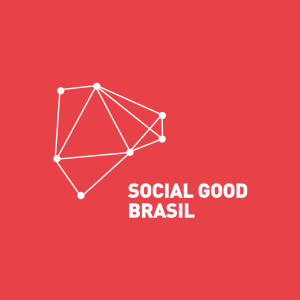
- Home
- Who we are
- Initiatives
- 2023
- 2022
- 2021
- 2020
- 2019
- Acreditar
- Capão’s Citizen Association
- CENEP
- ClareArt Association
- Dreaming Project Institute
- Interference
- Nursery Walk With Love is the Solution
- Organic Outskirts
- Panthers’ Productions Collective
- Sementinha Project (Little Seed) – Year 5
- Stitch to Stitch Collective
- The Story Finders Collective
- Untangle and Don’t Fool Me Collective
- 2018
- 2017
- 2016
- 2015
- 2014
- Partners
- Network and Territory
- Transparency
- Publications
- Make a donation!
SGB LAB 2017
SGB LAB
SGB Lab is a laboratory that helps enabling projects using technology and new media to make the world better. In the Lab, they bet on social innovators who dream big and believe in the power of technologies and new media.
In 2017, 262 projects were submitted from 16 states in Brazil and, after a challenge, 50 were selected to participate in the Lab. Out of all applicants, 21 achieved the Demo Day and 3 were selected as finalists.
Mãe&Mais (Mãe&Plus) / Entrepreneurs: Thais Ferreira and Samara, RJ/R$ 7,600.00
The health services market has a turnover of R$ 418 billion every year in Brazil. The main users are women and children from 0 to 6 years of age: we have 67 million mothers and 18 million children in this age group currently in the country. But how can we make quality care available to those who need it most? This is the goal of Mãe & Mais, a project that provides warm and humane medical care accessible to popular areas of Rio de Janeiro.
During the SGB Lab, Thais and Samara created a prototype a space that will serve as a low income reference clinic, attending and educating mothers and children in early childhood. They have carried out 21 itinerant actions, 27 doctors have been involved in the project and have already impacted more than 300 people. The Mãe&Mais uses guidance technologies for data to be more effective and assertive in assistance, and focus their actions on people and places that need it most.
The main idea that guides the project is easy to understand and very significant: Empowering mothers means taking care of the future of the next generations. The Mãe&Mais also shows us that in order to innovate, we do not need millions of technologies and devices. All it need is an empowered and humanized look, focused on solving the problems of those who need it most in a different way.
Chat21 / Entrepreneur: Gabriela Laborda, RJ / R$ 7,600.00
Everyone who is a mother or father knows the number of questions that come to mind when we get the news of a new baby on the way. Is it going to look like Mom? Like dad? Will the baby be bald or hairy? The longing generates expectations and many doubts. But have you ever wondered what it’s like to receive the news that your son or daughter has the trisomy 21 chromosome, which causes Down’s syndrome?
Gabriela, the creator of Chat21 (acronym for T21 Humanized Assistance Center), went through this experience when she had her daughter Maíra, and decided to help other parents who are in the same situation. One in every 700 babies in Brazil is born with the syndrome – almost 10 children a day! The idea behind Chat21 is to connect and support the mothers and fathers of these children, in an accessible, simple way that shows that no one is alone.
The instant messaging application WhatsApp is the main working tool. During the SGB Lab, 18 regional groups of parents were formed. The service is free and supported by specialists. In two months, the project held 106 hosts, while a local institution that Gabriela knew could only manage 20 in a year. The major objective of the project is to serve as the basis for the national protocol for the care of children with Down syndrome.
Blindsight / Entrepreneur: Ricardo Sabedra, RS / R $ 7,600.00
Would you feel safe leaving to do your routine activities blindfolded? Have you ever imagined facing a busy street without seeing anything? The 7 million people with visual impairment in Brazil face this problem every day. Ricardo lived this problem closely with Raí, a friend who is visually impaired. He lived in fear of moving even in small distances, like a college room exchange. Thinking about Raí, Ricardo decided to find a solution that would increase the autonomy and mobility of people with visual impairment – and reduce fear.
By testing his ideas with the help of Raí, Ricardo developed a wearable device, a kind of belt equipped with motion sensors that the visually impaired person wears at the waist. The sensors produce vibrations that transmit sensorially to the user the presence of obstacles. It works much like car parking sensors, and the idea is for Blindsight to be used in conjunction with the cane. Over time, whoever uses the device understands the signals emitted by the device and even differentiates people and movements.
The Blindsight team continues to work to make the device increasingly effective and intelligent. It is sold at an affordable price to those who need it, but it also allows the company to grow and improve the product.
Want to know more about SGB Lab? Access the links below:
http://socialgoodbrasil.org.br/lab
https://www.youtube.com/watch?v=-H5rbHgJH-g
https://www.youtube.com/watch?v=JAK18ZZjghY
https://www.youtube.com/watch?list=PLkFN4FqQWk3bVTQv_baAIU6w984X5Evgr&v=B3vyizmtowc














